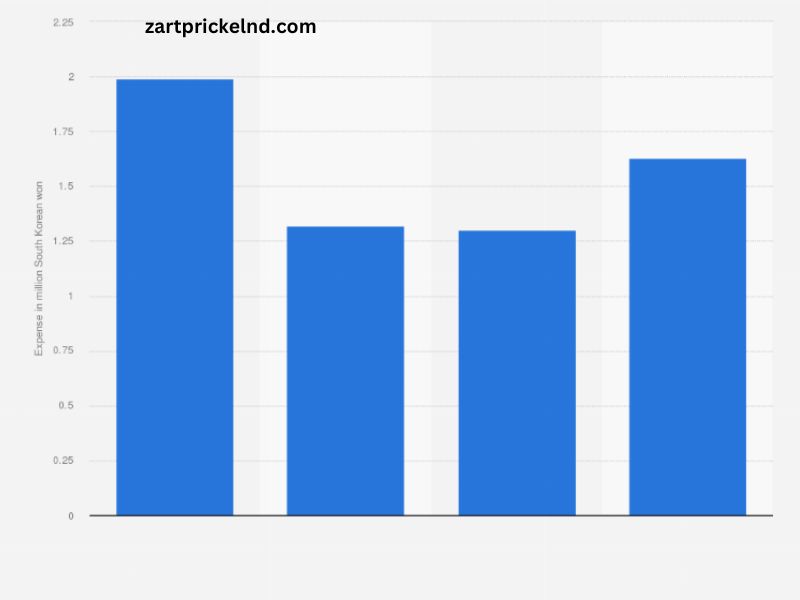Entertainment is a crucial part of modern life, serving as a means to relax, unwind, and connect with others. However, understanding the costs associated with various forms of entertainment can be complex, as it varies greatly depending on individual preferences, location, and lifestyle. In this article, we will explore the average monthly expenditure on entertainment across different categories, including streaming services, dining out, movie-going, hobbies, and events. We’ll also consider regional variations and factors that can influence these costs.
Streaming Services
Streaming services have become a dominant form of entertainment in recent years. With the proliferation of platforms like Netflix, Amazon Prime Video, Disney+, and Hulu, many households have shifted their viewing habits from traditional cable to on-demand streaming.
On average, the cost of streaming services can range from $10 to $20 per month per subscription. As of 2024, here’s a breakdown of some popular streaming services:
- Netflix: $15.49 (Standard Plan)
- Amazon Prime Video: $14.99 (included with Amazon Prime)
- Disney+: $11.99
- Hulu: $14.99 (No Ads Plan)
Many people subscribe to multiple streaming services to access a diverse range of content. If you subscribe to three services, you can expect to spend around $50 to $60 per month.
Dining Out
Dining out is a popular form of entertainment that can vary significantly in cost. According to recent surveys, the average American household spends about $300 to $400 per month on dining out. This includes:
- Casual Dining: Meals at fast-casual restaurants or diners typically cost between $10 to $20 per person.
- Mid-Range Restaurants: Dining at mid-range restaurants might cost $25 to $50 per person, depending on the location and type of cuisine.
- Fine Dining: A meal at a high-end restaurant can cost $75 or more per person, often excluding drinks and tips.
Dining habits also vary by region. Urban areas generally have higher dining costs compared to rural regions. Additionally, lifestyle choices such as frequency of dining out and preference for high-end restaurants can influence monthly expenditures.
Movies and Theaters
Going to the movies or attending live theater performances is another popular entertainment option. Movie ticket prices have been rising steadily, with an average cost of $12 to $15 per ticket in the U.S. For a family of four, this can easily amount to $50 to $60 per outing. If you go to the movies twice a month, expect to spend around $100 to $120.
Theater tickets vary widely based on the production and location. Broadway shows in New York City can cost between $75 to $200 per ticket, while local theater productions might range from $20 to $50 per ticket. Attending a theater performance once a month can add an additional $20 to $200 to your monthly entertainment budget, depending on the type of production and seating choice.
Hobbies and Leisure Activities
Engaging in hobbies and leisure activities can also contribute to your entertainment expenses. The cost of hobbies can vary significantly based on the type and frequency of participation:
- Fitness and Sports: Gym memberships can cost between $30 to $100 per month. For those who participate in sports leagues or fitness classes, costs might be higher, depending on the activity and location.
- Arts and Crafts: Investing in supplies for hobbies like painting, knitting, or woodworking can range from $20 to $100 per month, depending on the materials and projects undertaken.
- Gaming: Video game enthusiasts might spend $60 to $70 on new games each month, or subscribe to gaming services like Xbox Game Pass or PlayStation Plus, which cost around $10 to $15 per month.
Events and Social Activities
Attending events and participating in social activities can add to monthly entertainment costs. This category includes:
- Concerts and Music Festivals: Tickets for concerts can range from $30 to $200 or more, depending on the artist and venue. Attending one or two concerts a month can cost between $60 to $400.
- Sporting Events: Tickets for major sporting events vary widely, with average prices of $30 to $150 per ticket for regular-season games. Premium seating and playoff games can be significantly more expensive.
- Festivals and Local Events: Local fairs, festivals, and community events often have lower costs, ranging from $10 to $50 per event. However, expenses can add up if you attend multiple events each month.
Regional Variations
Entertainment costs can vary greatly depending on where you live. For instance:
- Urban Areas: Cities like New York, Los Angeles, and San Francisco typically have higher costs for dining out, entertainment, and events compared to smaller cities or rural areas.
- Suburban and Rural Areas: Residents in suburban or rural areas may find lower costs for dining and entertainment, but access to certain activities or events might be limited.
Regional economic conditions, local cost of living, and cultural differences can all influence how much people spend on entertainment.
Balancing Entertainment Costs
Managing entertainment expenses involves finding a balance between enjoying activities and staying within budget. Here are some tips to help manage entertainment costs effectively:
- Prioritize: Identify which forms of entertainment are most important to you and allocate your budget accordingly.
- Look for Discounts: Take advantage of discounts, memberships, and loyalty programs to reduce costs on streaming services, dining, and events.
- Set Limits: Establish a monthly entertainment budget and track your spending to ensure you stay within your limits.
- Explore Free Options: Participate in free or low-cost activities, such as community events, outdoor activities, and public entertainment.
Conclusion
In summary, the average monthly expenditure on entertainment can vary widely based on individual preferences and location. On average, people might spend between $200 to $500 per month on entertainment, including streaming services, dining out, movies, hobbies, and events. By understanding these costs and implementing strategies to manage them, individuals can enjoy a fulfilling entertainment experience without overspending.
Whether you’re a movie buff, a foodie, or a sports enthusiast, finding the right balance between enjoyment and budgeting will help you make the most of your entertainment options while keeping your finances in check.



